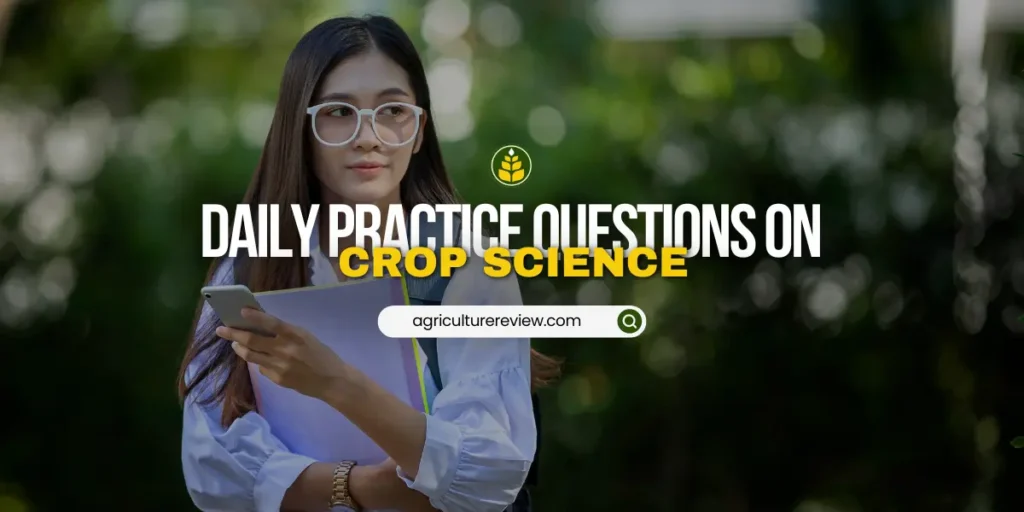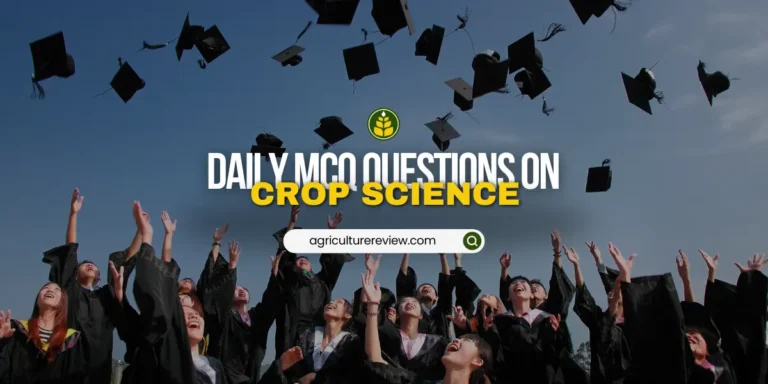1. The following are modern techniques in biotechnology except:
2. The name cereal is derived from the name of the most important grain deity:
3. It is the classification of farming system based on type and intensity of rotation, water supply, cropping patterns, and animal activities and degree of commercialization:
4. Which does not belong to the group?
5. The following are types of shifting cultivation systems except:
6. An example of a small fruit is:
7. Which of the following methods of crop improvement is not commonly used due to difficulty in identifying the change in the desired trait?
8. Momordica charantia and Sechium edule are examples of the family:
9. A basis of hybrid crosses wherein a hybrid is crossed to one of its parents to improve lines or cultivars that excel in most desirable characteristics but lack one or a few:
10. This is the scientific name of rambutan:
11. A type of dormancy wherein the new embryo stops growing while still attached to the parent plant thus, preventing the seeds from germinating viviparously even after the ripe seed is shed off or harvested:
12. It is a class of seeds whose genetic identity and purity of the variety are maintained. This type of seed is the source of all certified seed classes either directly or through registered seed. It is issued with red tags:
13. The enlarged, fleshy root of some plants like Daucus carota, Ipomea batatas, Raphanus sativus, etc., are examples of modified roots doing the function:
14. It is the result of the union of male and female gametes, which results in the formation of seeds and the creation of individuals with new genotype. This usually results in the increased vigor or growth of hybrid progeny in relation to the average of the parent known as:
15. A type of sclerenchyma that is short and more or less cuboidal in shape that imparts a gritty feeling when fruits containing them are eaten is called:
16. The competition of the different parts of a plant for water, nutrients, light, etc. is known as:
17. Stems of monocot plants are generally smaller compared to dicot plants because of the absence of meristematic tissue called:
18. Biological diversity is the total variability within all the living organisms and the ecological complexes they inhabit. Which of the following is not a level of biodiversity?
19. A strengthening tissue present in the plant that can be extracted and transformed into economic products like rope, jute jack, cotton balls, or cloth is:
20. A type of plant propagation wherein formation of adventitious roots or buds occurs before separation of the propagule from the parent plant:
21. Several plants have the characteristic of becoming leafless during a year’s growth. These plants that shed off their leaves are called:
22. The young plant that develops inside the seed is called:
23. Which of the following strategies is least likely to improve crop yield in saline soils?
24. Which of the following processes involves the conversion of nitrogen gas from the atmosphere into a form that plants can use?
25. The process by which water is transported from the roots to the leaves of plants is called:
26. A plant that has separate male and female plants is referred to as:
27. The primary macronutrient responsible for promoting root development in plants is:
28. Which of the following best describes “allelopathy” in plants?
29. The study of insects that affect crop production is known as:
30. The process of improving crop varieties by selecting and breeding plants with desirable traits is known as:
31. The part of the plant where photosynthesis primarily takes place is:
32. The movement of genetic material between organisms other than by the “vertical” transmission of DNA from parent to offspring is called:
33. The primary function of the root hairs on a plant’s root system is:
34. The symbiotic relationship between fungi and plant roots that enhances nutrient uptake is known as:
35. Which type of soil structure is most ideal for plant growth?
36. The process by which plants lose water vapor through small openings on their leaves is called:
37. Which of the following is a micronutrient required by plants?
38. The practice of growing different types of crops in the same area in sequential seasons is called:
39. Which type of pest control uses natural predators or parasites to manage pest populations?
40. The process of breeding and selecting plants for specific traits to create new plant varieties is known as:
41. Which of the following plant hormones is primarily responsible for cell division and growth?
42. The primary function of stomata in plant leaves is:
43. The practice of controlling the amount and timing of irrigation to maximize crop yield and water use efficiency is known as:
44. The primary carbohydrate produced by plants during photosynthesis is:
45. The transfer of pollen from the anther to the stigma of a flower is known as:
46. Which of the following is a primary benefit of crop rotation?
47. Which of the following best describes a “cover crop”?
48. Which type of symbiotic relationship is most commonly found between legumes and nitrogen-fixing bacteria?
49. Which of the following processes is primarily responsible for water movement within plants?
50. The primary purpose of the xylem tissue in plants is:
51. The process of converting atmospheric nitrogen into a form usable by plants is known as:
52. Which of the following is an essential macronutrient for plant growth?
53. The green pigment in plants responsible for capturing light energy for photosynthesis is called:
54. Which process is responsible for the conversion of light energy into chemical energy in plants?
55. The movement of water through a plant from roots to leaves due to capillary action and transpiration is called:
56. Which term describes the symbiotic association between plant roots and fungi?
57. Which soil pH range is considered optimal for most crop growth?
58. The primary role of phosphorus in plant growth is:
59. Which process is essential for the conversion of atmospheric nitrogen into a form that plants can absorb?
60. The part of the plant responsible for producing seeds is the:






